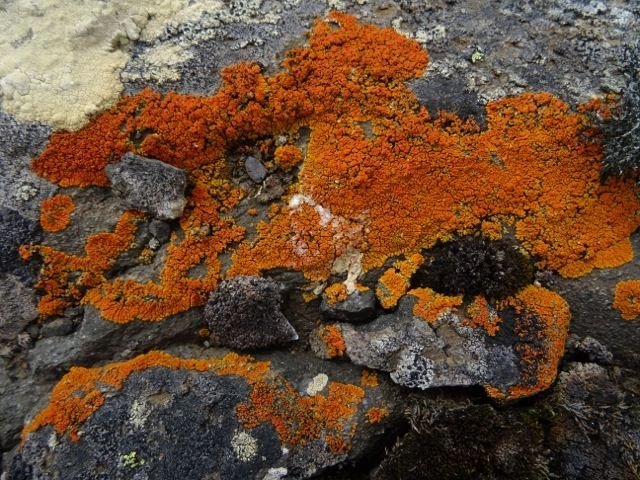Mosses are very common and there are many different species on King George Island, many more than the 4 species we work with at Casey. At the bottom of the hill below the glacier, the moss grows in thick turfs, as shown in the last blog. At the top, closest to the glacier there are smaller buttons of moss and there seem to be a lot more sporophytes, the reproductive structures of moss.
This means the moss can then reproduce via spores (sexual reproduction) and not just vegetative reproduction, when fragments of moss turf are moved into a new area where they are able to grow.
Lichens are everywhere, there are able to survive really tough environmental conditions and are the first things to grow on the moraine line. On Fildes Peninsula the lichens are incredible, with really amazing shapes and lots of colours too (green, grey, black, orange, yellow, brown, and white).
Many produce reproductive structures which are really sculptural and very bizarre looking. Some of my favorites are the fruticose Usnea species and the ones that looks like a fried eggs, Placopsis species.
The vegetation is all small sized and grows close to the ground where it can absorb sunlight and stay warm and out of the fierce cold winds!






